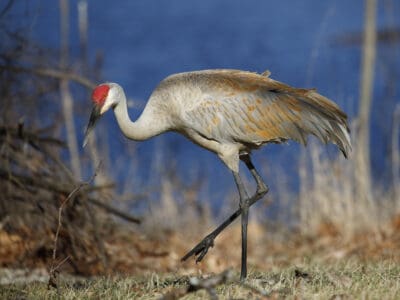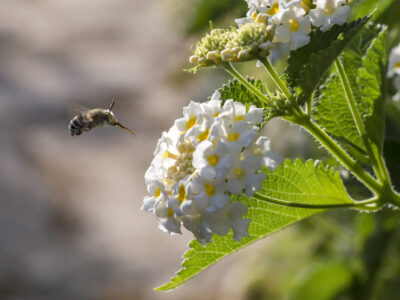At 1,214 square miles, Rhode Island is the smallest state in the nation, and some may wonder how it could possibly have any wildlife. Only New Jersey is more densely populated, so there’s hardly enough room for human beings! But wild animals care nothing for state boundaries. It’s climate, the presence of food and shelter, and whether they can find proper mates that concern them. Rhode Island’s largely humid continental climate, geography, and proximity to both freshwater and the ocean are just the thing for many wild creatures. Read on to learn more.
The Official Animals of Rhode Island
Official state mammal: Harbor seal
This seal can weigh as much as 370 pounds. There are five subspecies.
Official state bird: Rhode Island Red
The Rhode Island Red is a chicken. It is a stately bird with mahogany red feathers and a black tail, and it lays brown eggs.
Official state fish: Striped bass
This silvery fish spends some of its life in the ocean and travels up freshwater rivers to spawn.
Official state shell: Quahog
The quahog is a type of clam whose shell was used to make wampum, a Native American currency. Also called the hard-shell clam, it makes good eating and is a favorite at Rhode Island clam bakes.
Where To Find The Top Wild Animals in Rhode Island
Rhode Island does not lack in wildlife areas. Among them are the Sachuest Point National Wildlife Refuge in Middletown, the Trustom Pond National Wildlife Refuge in South Kingstown, the Davis Memorial Wildlife Refuge in East Greenwich, and the Block Island National Wildlife Refuge in New Shoreham. Block Island, which is off the coast of the state, has an oceanic climate and is arrived at via ferry. Other places to experience wild creatures are the Arcadia Management Area which extends into Hopkinton, West Greenwich, Richmond, and Exeter and is known for a population of beavers. East Beach State Beach on Quonochontaug Neck is famous for saltwater fishing. Wildlife that can be seen at these and other places in the state include:
Large Mammals
People may be surprised to learn that black bears have been seen in Rhode Island. These bears seem to be wandering in from Connecticut and Massachusetts. The other large mammal is the white-tailed deer, which is famous for adapting to changing conditions and thriving near human habitations. The fallow deer is not native to Rhode Island but originated in Europe and the Middle East. It can be told from white-tailed deer because of its shovel-like antlers and spotted coat.
Unsurprisingly, most large mammals in Rhode Island are found in their share of the Atlantic Ocean. They include the rorquals such as the blue, humpback, and fin whale, the North Atlantic right whale, and the bowhead whale. The sperm whale can be found in the deeper ocean waters and the pygmy and dwarf sperm whale are seen off the coast along with the rorquals and the beluga whale. Other marine mammals found off Rhode Island are dolphins, beaked whales, and harbor porpoise. The harbor seal, of course, is the state mammal, and it is joined by the gray seal. Some of the rarest sightings are of the bearded seal, which gets its name from its abundant and curly whiskers.
Rodents and Other Small Mammals
There are more species of small mammals in Rhode Island than large ones. Among the rodents are the eastern chipmunk, the woodchuck, and a few species of squirrel, including the eastern gray squirrel and the red squirrel. The southern flying squirrel is also found in Rhode Island, as are New World rats and mice, jumping mice and voles. The beaver is one of the largest of the rodents, and the somewhat smaller muskrat can be found in Rhode Island wetlands. Some of the most common rodents, the brown rat, the black rat, and the house mouse have become pests.
Other small mammals are bats and foxes, the striped skunk, the opossum, the raccoon, and several species of shrew, which look like rodents but are in their own order.
Birds
It’s not surprising that many species of birds who live in or visit Rhode Island are waterfowl. These include ducks, swans, and geese, including the smew, whose male has an elegant black and white plumage. The origins of its strange name are uncertain. Other ducks are buffleheads, goldeneyes, and mergansers.
More birds that live in wet areas are the corncrake, the sora, the American coot and the purple gallinule, the sandhill crane and the American avocet, herons, egrets, pelican, spoonbills, and ibises. Shorebirds include many species of sandpiper, godwits, dunlins, curlews, and whimbrel. One of the seabirds is the parasitic jaeger, which gets its name because it steals food from other birds. Instead of penguins, Rhode Island’s shores are home to murres, the Atlantic puffin, the razorbill, and the dovekie. Many species of gulls at least visit Rhode Island, while some, such as the herring gull and the great black-backed gull, breed there.
Rhode Island is also the breeding ground for a large number of birds of prey, including hawks, kites, falcons, merlins and kestrels, harriers, goshawks, and eagles. Other avian predators are owls, including the barn owl, the boreal owl, and the great gray owl. The burrowing owl, a strange little bird that lives in burrows dug by prairie dogs, is diurnal instead of nocturnal like other owls and deters predators by imitating the rattle of a rattlesnake. One of the rarest of Rhode Island’s owls, it is considered a vagrant, which means it’s been seen now and then.
Other birds found in Rhode Island are the rock pigeon and the mourning dove. There are cuckoos, woodpeckers, and the chimney swift, which really does build its nest in people’s chimneys. The ruby-throated hummingbird breeds in Rhode Island, as does the common nighthawk, the eastern whippoorwill, and several species of vireos. Also found in Rhode Island are the bluejay, the crow, the raven, chickadees, swallows, kinglets, the horned lark, nuthatches, cedar waxwings, and the brown creeper. The European starling isn’t native to Rhode Island but is a common sight, as are mockingbirds and thrushes, including the American robin. There are sparrows, buntings, and finches, blackbirds, cowbirds, orioles, and warblers. The cardinal and its cousins the tanagers, grosbeaks, indigo, and painted buntings are also seen.
Reptiles and Amphibians
Rhode Island does get cold in the winter, so its population of reptiles and amphibians may not be as extensive as it is in warmer climes. However, the list of herps is surprisingly robust and includes the blue-spotted, four-toured, and eastern red-backed salamanders and the red-spotted newt. Frogs and toads include the eastern spadefoot, the spring peeper, the green frog, the American bullfrog, the pickerel frog, and the American toad. As for snakes, the eastern worm snake and the northern black racer are found in Rhode Island, as are garter snakes, ribbon snakes, and the tiny northern brown snake. The one venomous snake is the timber rattlesnake, which is the only rattlesnake found this far north.
Turtles include the painted turtles, the common snapping turtle, the musk and the box turtle, and the northern diamondback terrapin. Some of the rarest sea turtles, such as the hawksbill, also swim in Rhode Island’s ocean.
Insects
As with most places, insects are numerous in Rhode Island, with over 1000 species of these invertebrates identified. These include the antlion, whose adult has delicate gossamer wigs but whose larvae set a trap for ants in sandpits. Butterflies and moths include the moth of the banded woollybear caterpillar, whose bands are supposed to predict the severity of the winter, the bluish spring moth, several types of large and beautiful swallowtail and milkweed butterflies and silk moths, a moth called the changeable grass-veneer, and a strange moth called the grapeleaf skeletonizer, which looks like a wasp. Even the gorgeous blue morpho has been sighted in Rhode Island, even though it’s native to Central America.
There are many species of ants, wasps, and hornets, and it appears that the notorious Asian giant hornet or murder hornet has made its way to the state. Unfortunately, this insect not only has a powerful sting but likes to eat honey bees.
Beetles include click beetles, weevils, fireflies, ladybugs, stink bugs, and large beetles such as the Eastern Hercules beetle and the elephant rhinoceros beetle. Some beetles, such as the festive tiger beetle, the golden tortoise beetle, the jewel weevil and the dogbane leaf beetle have metallic or iridescent coloring. There are also aphids, craneflies, dragonflies and damselflies, including the fragile forktail, grasshoppers, crickets, katydids flies, mosquitoes and walkingsticks.
Other arthropods are different species of spiders, millipedes, centipedes, ticks, mites, and sowbugs.
Fish
Fish are abundant in Rhode Island’s fresh and saltwater. Besides the striped bass, the state fish, freshwater fish include alewives, shad, trout, salmon, sturgeon, catfish, and carp. There’s a fish called the Dolly Varden, a relative of the salmon named for a character in a Dickens’ novel, or more precisely, a type of colorful dress named after the character.
Other fish that live in the lakes, ponds, rivers, and streams of Rhode Island are sunfish, grayling, shiners, perch, pickerels, and pumpkinseed. The splake, a cross between a female lake trout and a male brook trout is also found in Rhode Island as are striped bass hybrids.
Saltwater fish include seatrout and several species of tuna, including the albacore and the Atlantic bluefin. Sharks include the bull shark, the dog shark, the mako shark, and the great white shark. The cunner is also called the seaperch and waits out Rhode Island’s chilly winter by hiding under rocks and going into torpor. There’s also the king mackerel, the pollack, and the pompano. Though the monkfish is considered so ugly that its head is frequently cut off to not scare away buyers at the fish market, the oyster toadfish is even uglier. Indeed, one of its other names is the ugly toad.
Invertebrates found in Rhode Island’s waters are lobsters, crabs including fiddler crabs, mollusks such as the triangle floater, the lamp mussel, the golden amber snail and Morton’s egg cockle, amphipods, scallops, the common sea star, sea urchins, marine worms, nudibranchs, and shrimp.
Zoos in Rhode Island
Though no wildlife area in Rhode Island is very far from another, some people may still wish to go to the zoo to experience animals native and exotic. Zoos in Rhode Island are the Roger Williams Park Zoo in Providence, which is the home of Elsa the white alligator, and Biomes Marine Biology Center in North Kingstown.
Wild Animals in Rhode Island
Among the animals not listed above are the dwarf balloon Aeolis, a type of nudibranch. It is a hermaphrodite, and when two meet they have a contest to see who will be the male. They’re found at the shore to depths of about 30 feet in the ocean.
The female of the white-marked tussock moth is wingless, and once she emerges from her cocoon she simply waits for a male to find her. Then, she lays eggs and dies. The eggs overwinter and the caterpillars, who are covered with irritating hairs, hatch in spring.
The American mink is a type of weasel and is surprisingly common in the state, though it is elusive. It lives near water and mostly eats aquatic animals. The mink is prized for its luxurious fur, and though farm-raised animals can have fur that ranges from white to black, the fur of a wild mink is brown.
The Most Dangerous Animals In Rhode Island Today
Rhode Island doesn’t have a lot of dangerous animals, but there are still a few that a person should steer clear of.
- Asian giant hornet. Though this creature causes fewer deaths per year than the beloved honeybee, its sting is very painful and as a large insect it can inject a lot of venom. Because of this, it takes longer for a person to heal from its sting, even if they’re not allergic to bee or wasp venom. Some people need to be hospitalized, and the sting often leaves a scar.
- Black bear. Black bears eat mostly vegetation, but that doesn’t mean they’re not dangerous. They have been known to attack and even kill humans, so it is best to observe them at a safe distance.
- Timber rattlesnake. This snake may be smaller than other rattlesnakes found in the country, but it is still venomous and should be treated with respect.
- The mosquito. Even though Rhode Island mosquitoes don’t spread malaria, they’re responsible for diseases such as the West Nile virus.
Endangered Animals In Rhode Island
- Hawksbill sea turtle. This sea turtle is critically endangered because of pollution and the loss of nesting sites.
- American burying beetle. This pretty red and white beetle is also critically endangered. They get their name because part of their courtship ritual is to bury a dead carcass.
- Roseate tern. The northeastern nesting population of this seabird is endangered. It gets its name because of the bird’s rosy breast during the breeding season.
- Red knot. This shorebird is considered threatened.
Native Plants in Rhode Island
Rhode Island is rich in both flora and fauna. There are over 1,200 plant species native to the state. Some native plants in Rhode Island include leatherleaf, white ash, and swamp rose-mallow, among others.
More Articles Related to Rhode Island
Read about:
- extinct animals that lived in Rhode Island.
- the best camping in Rhode Island.
- the highest point in Rhode Island.
Rhode Islander Animals

Admiral Butterfly
Stunningly beautiful wings
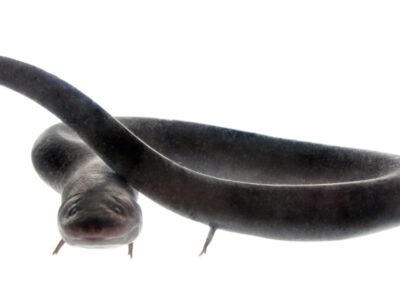
American Eel
Don't eat raw eel! Their blood is poisonous to humans when consumed raw.

Armyworm
They are so named because they "march" in armies of worms from one crop to another in search of food
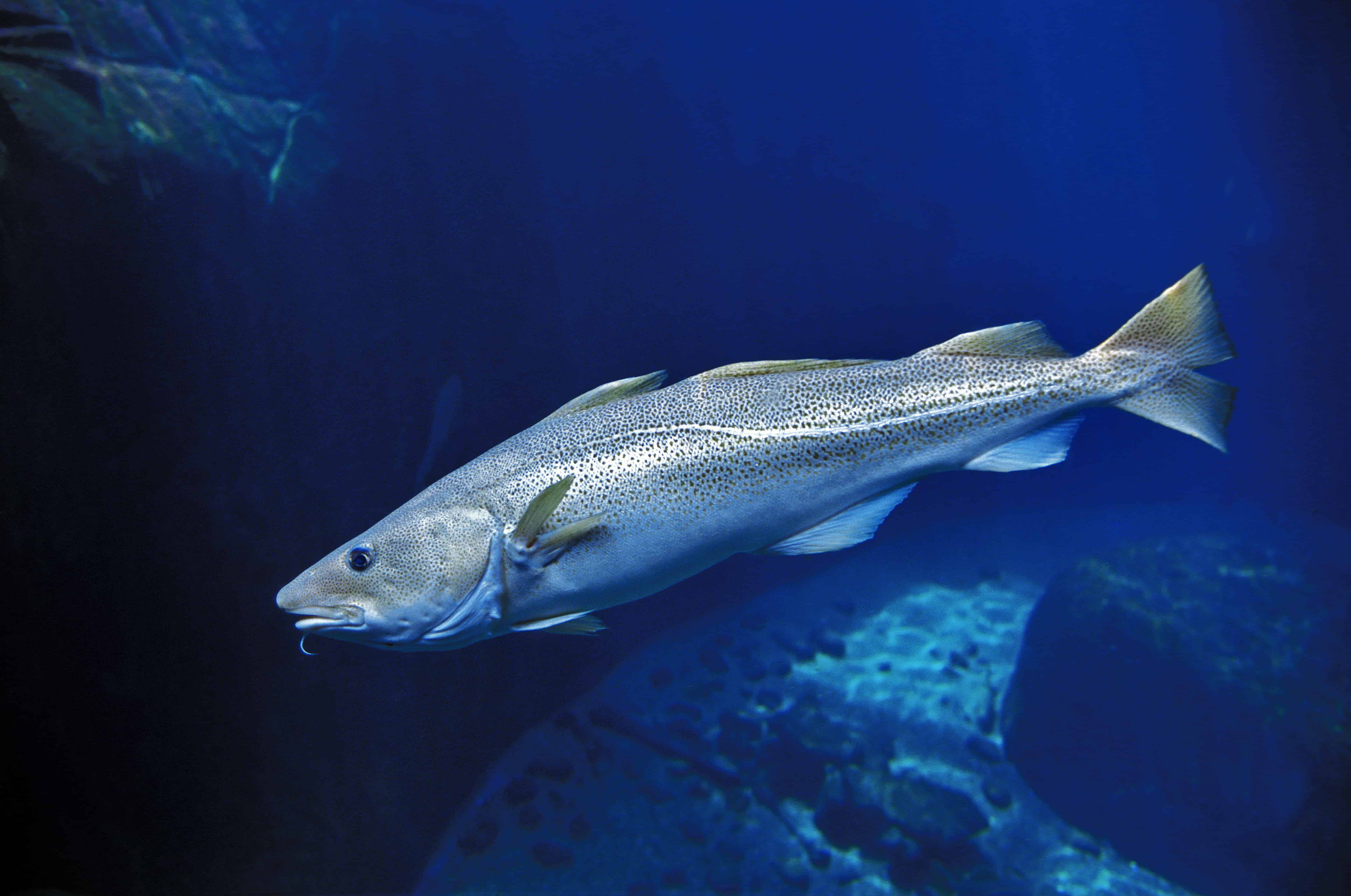
Atlantic Cod
One of the most popular food fishes in the world
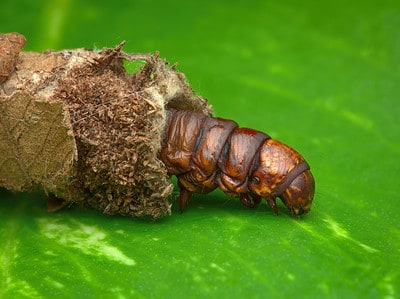
Bagworm Moth Caterpillar
They continually enlarge their protective cases

Beewolf wasp
They hunt bees

Clearnose Skate
The skate with translucent nose patches

Common Yellowthroat
The Common Yellowthroat stays close to the ground and uses stealth to survive!
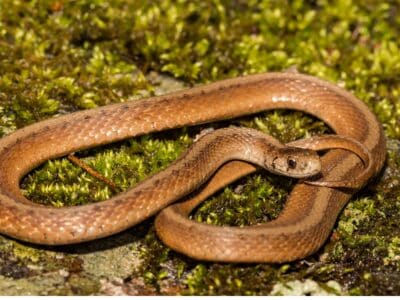
De Kay’s Brown Snake
They have specialized jaws for removing snails from shells.

Eastern Chipmunk
The name chipmunk is derived from an Ojibwe word that means “one who descends the trees headfirst.”

Eastern Hognose Snake
Eastern hognose snakes are venomous, but only to frogs and toads.

Flea
Adult fleas can jump up to 7 inches in the air
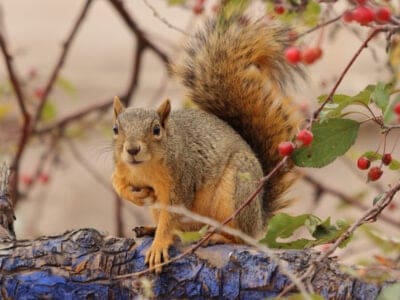
Fox Squirrel
Although it is a tree squirrel, it spends most of its time on the ground.

Groundhog (Woodchuck)
They whistle to each other to warn of approaching danger!

Jack Crevalle
One of the biggest species in the Caranx genus

Mealybug
They have a symbiotic relationship with ants.

Mockingbird
Mockingbirds are incredible mimics that can learn hundreds of songs!
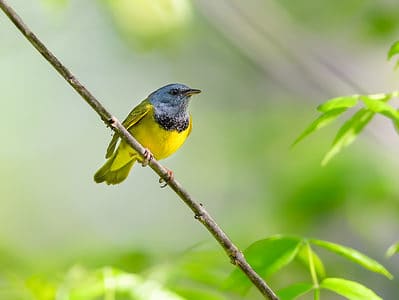
Mourning Warbler
The Mourning Warbler was named for its gray head, which resembles a mourning veil!

Nematode
Nematodes range in size from 1/10 of an inch to 28 feet long

Northern Water Snake
Northern watersnakes’ teeth help them nab fish as they swim by.

Orb Weaver
Females are about four times the size of males

Owl
The owl can rotate its head some 270 degrees
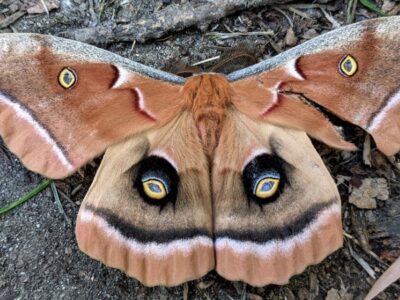
Polyphemus Moth
The Polyphemus moth doesn’t and can't eat, except when it's a caterpillar!

Pompano Fish
They are bottom-feeders
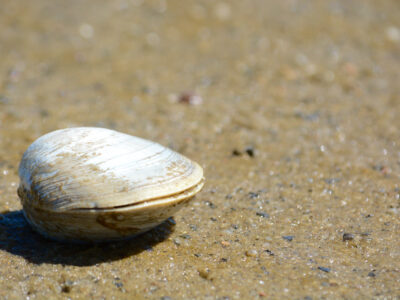
Quahog Clam
Their hinged shell protects their soft body

Rat Snakes
Rat snakes are constrictors from the Colubridae family of snakes.
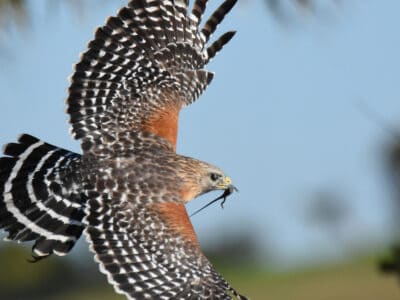
Red-Shouldered Hawk
Red-Shouldered Hawks reuse the same nesting area each year.
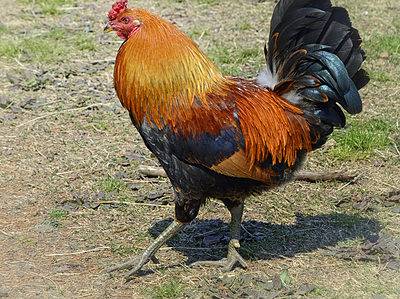
Rhode Island Red Chicken
Rhode Island Reds thrive in colder climates but are prone to frostbite, especially on their combs. But, if you smear some petroleum jelly on their combs, it can prevent frostbite

Rooster
Will mate with the entire flock!
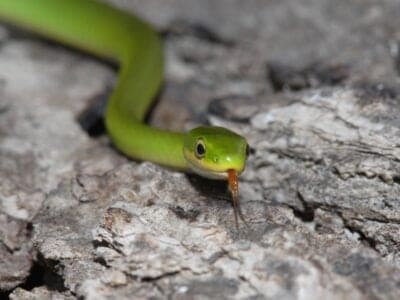
Rough Green Snake
Rough green snakes are great pet snakes because they're low-maintenance.
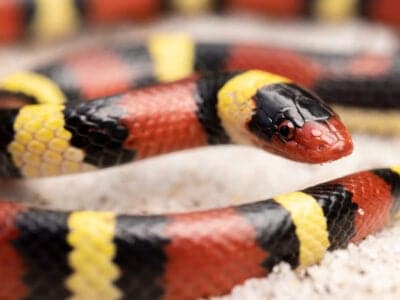
Scarlet Kingsnake
Scarlet kingsnake’s pattern is an example of Batesian mimicry.
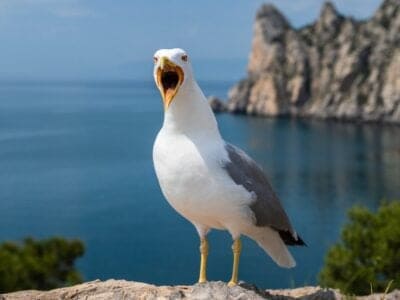
Seagull
Some gulls are capable of using tools

Smokybrown Cockroach
Has up to 45 eggs per egg case
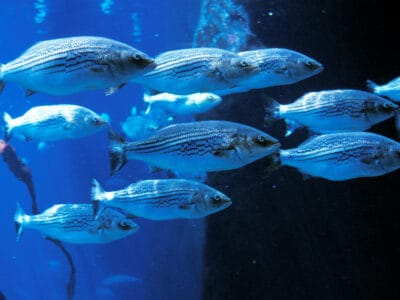
Striped Bass
Pilgrims counted striped bass as an essential part of their diet from the time they arrived in North America.

Tree Cricket
They make music with their wings
Rhode Islander Animals List
- Admiral Butterfly
- American Eel
- Armyworm
- Atlantic Cod
- Bagworm Moth Caterpillar
- Beewolf wasp
- Clearnose Skate
- Common Yellowthroat
- De Kay’s Brown Snake
- Eastern Chipmunk
- Eastern Hognose Snake
- Flea
- Fox Squirrel
- Groundhog (Woodchuck)
- Jack Crevalle
- Mealybug
- Milk Snake
- Mockingbird
- Mourning Warbler
- Nematode
- Northern Water Snake
- Orb Weaver
- Owl
- Polyphemus Moth
- Pompano Fish
- Quahog Clam
- Rat Snakes
- Red-Shouldered Hawk
- Rhode Island Red Chicken
- Rooster
- Rough Green Snake
- Sandhill Crane
- Scarlet Kingsnake
- Seagull
- Smokybrown Cockroach
- Southeastern Blueberry Bee
- Striped Bass
- Swallowtail Butterfly
- Tree Cricket
- Yellowish Cuckoo Bumblebee (formerly Fernald’s Cuckoo Bumblebee)
Animals in Rhode Island FAQs (Frequently Asked Questions)
What animals are found in Rhode Island?
A great many wild animals are found in Rhode Island despite the state’s population density and its small size. They include the black bear, the white-tailed deer, foxes, bats, many types of birds and many kinds of aquatic animals including invertebrates, fish, seals and whales.
Are there wolves in RI?
There are no wolf predators in Rhode Island.
What is the most dangerous animal in Rhode Island?
The most dangerous animal in Rhode Island is probably the mosquito, which spreads diseases.
What is Rhode Island mammal?
Rhode Island’s state mammal is the harbor seal.





